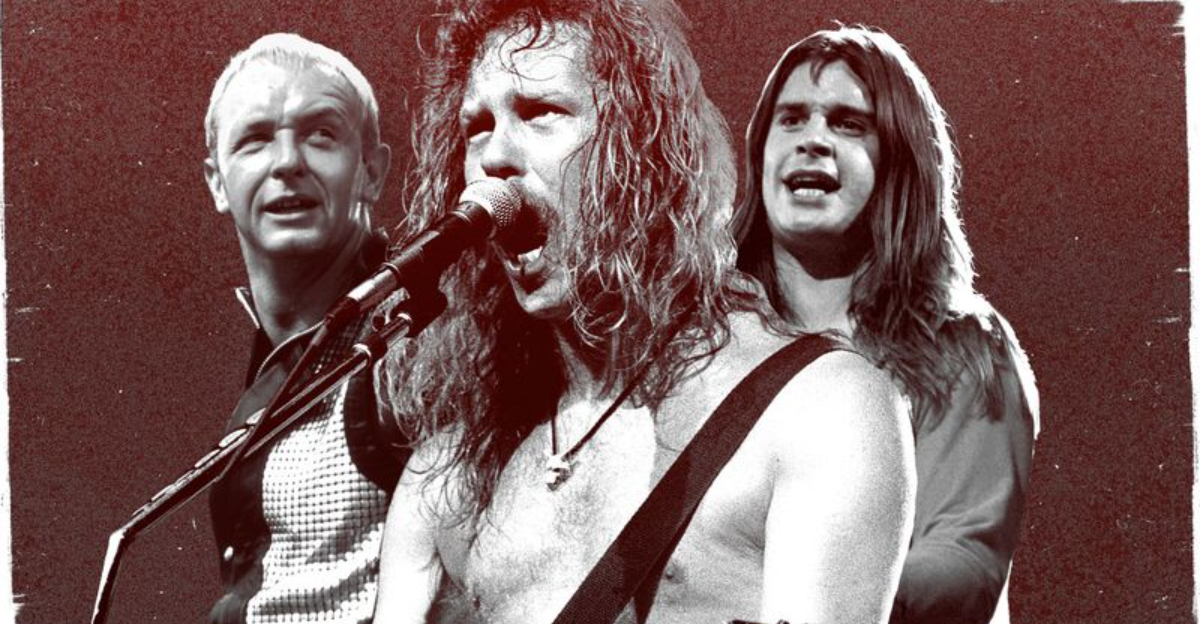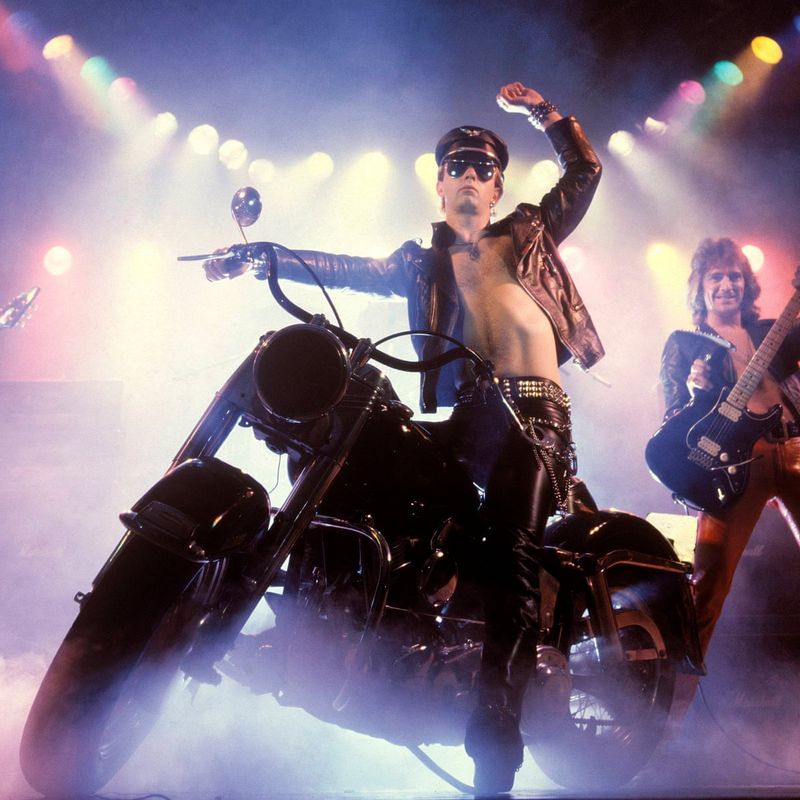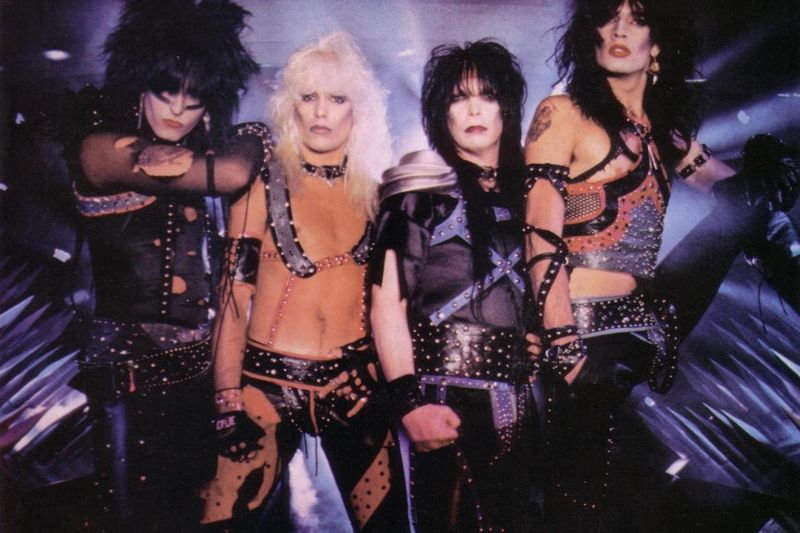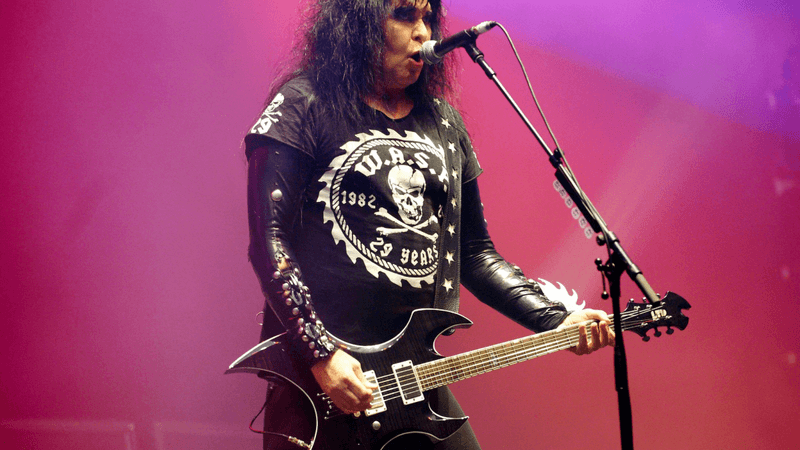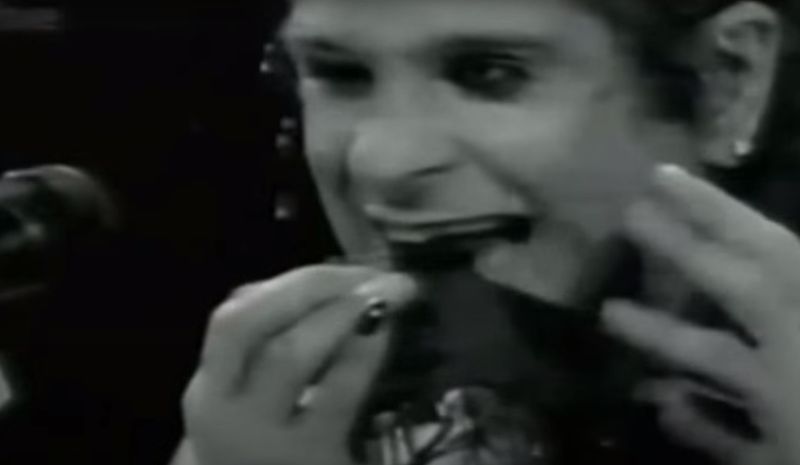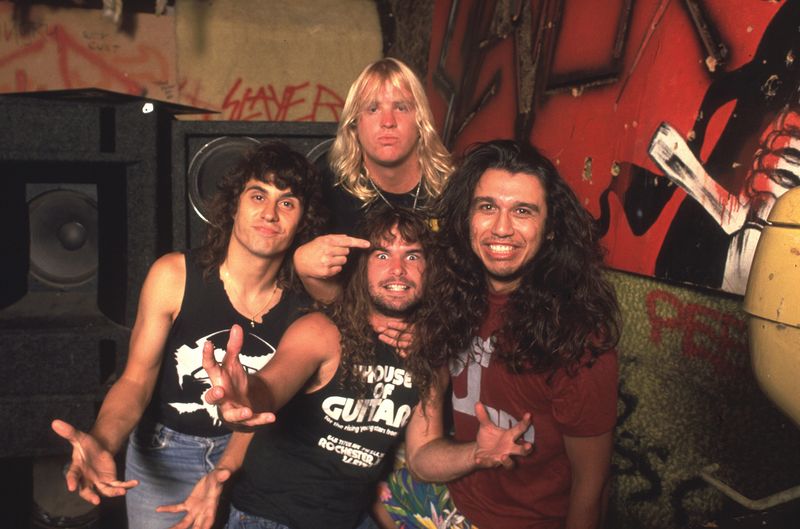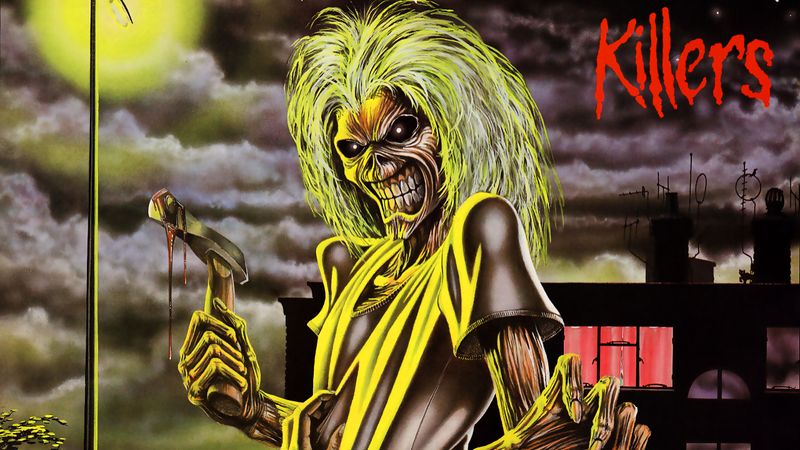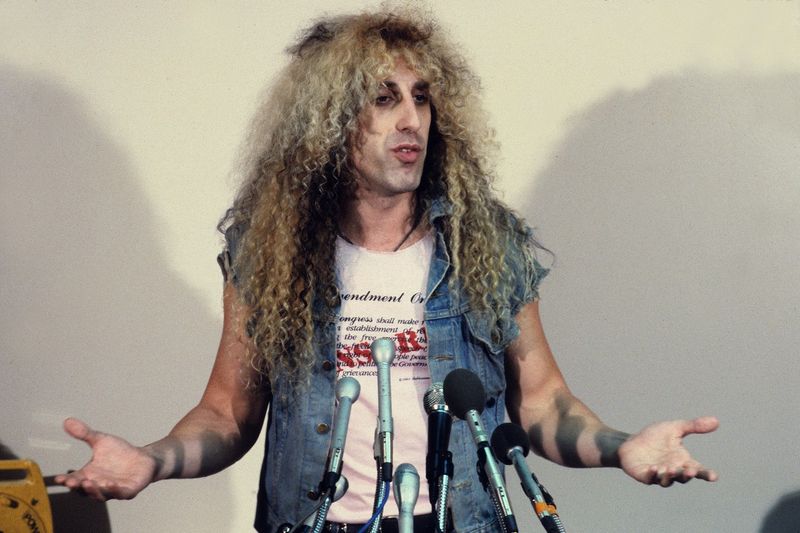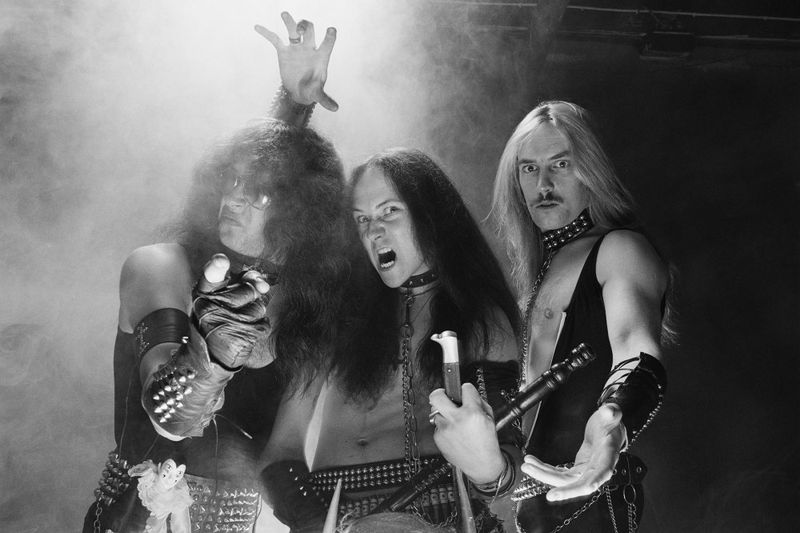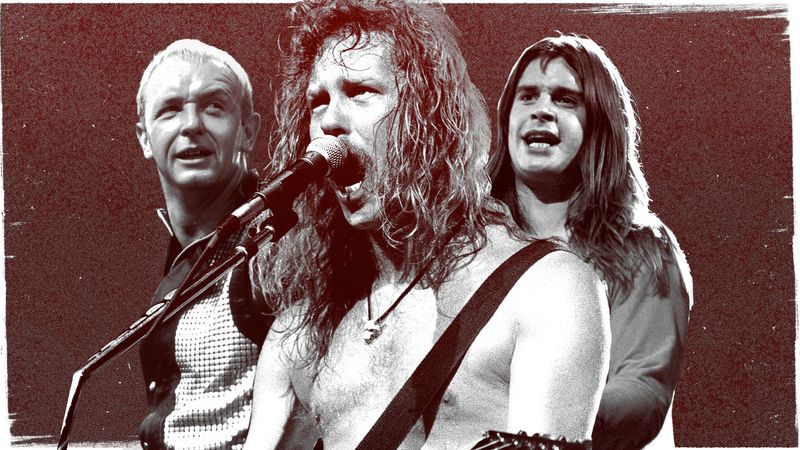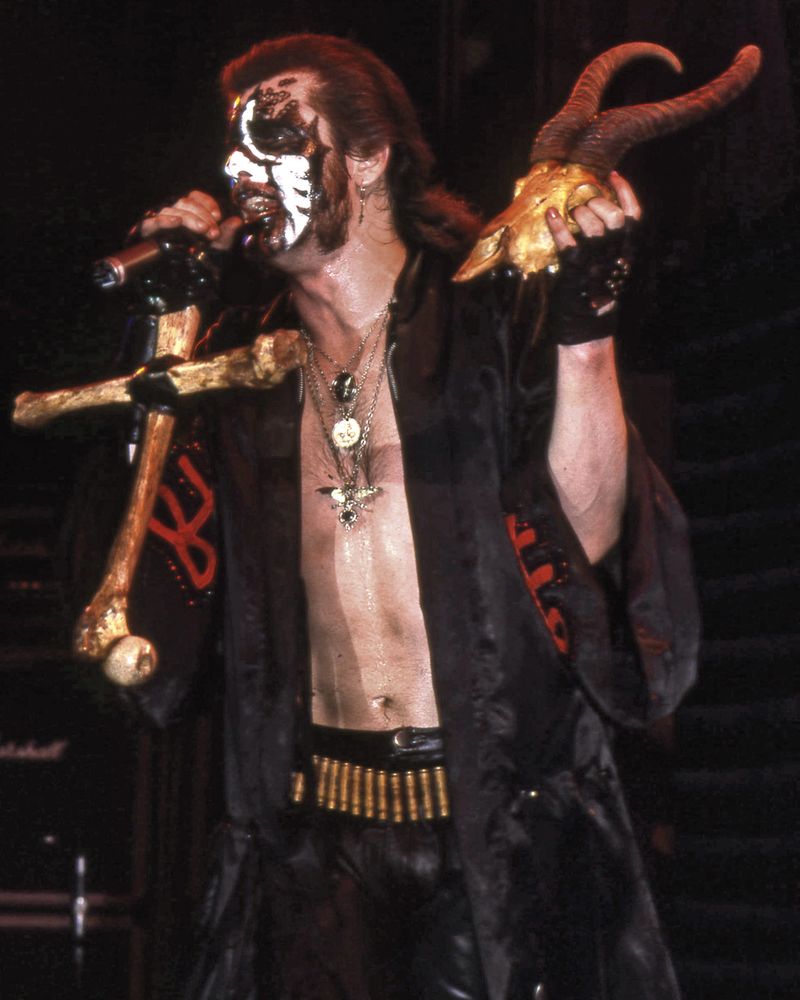The 1980s witnessed an explosion of heavy metal that had teenagers headbanging and parents panicking. These weren’t just bands—they were moral battlegrounds where the generation gap widened with every power chord. Metal’s aggressive sound, rebellious lyrics, and shocking imagery convinced many adults that Satan himself was recruiting through vinyl records. If your bedroom walls were plastered with any of these posters, chances are your parents were convinced you were one pentagram away from joining a cult.
1. Judas Priest’s Subliminal Message Nightmare
When two Nevada teens attempted suicide in 1985, their parents didn’t blame depression—they blamed Judas Priest. The band faced an actual courtroom trial over alleged subliminal messages hidden in their music when played backward.
Lead singer Rob Halford’s leather-studded image didn’t help matters. Parents saw his motorcycle-riding entrance at concerts as the ultimate bad influence, while his powerful vocals on tracks like “Breaking the Law” felt like a direct attack on family values.
Though eventually cleared in court, the damage was done. Owning a Judas Priest album became the teenage equivalent of bringing home a report card full of F’s.
2. Mötley Crüe: The Parents’ Worst Nightmare
Nothing said “my child is headed for trouble” quite like finding Mötley Crüe’s “Shout at the Devil” album hidden under your teenager’s bed. The band’s well-documented debauchery—involving mountains of drugs, rivers of alcohol, and oceans of questionable decisions—made them walking cautionary tales.
Their music videos featured scantily clad women, pentagram imagery, and enough hairspray to puncture the ozone layer. Songs like “Girls, Girls, Girls” celebrated strip clubs with unabashed enthusiasm.
Parents feared that listening to Nikki Sixx and company would transform their honor-roll students into makeup-wearing party animals with a sudden interest in pyrotechnics.
3. W.A.S.P.’s Shock-Rock Spectacle
Raw meat hurled at audiences. Drinking blood from a skull. Songs with titles that couldn’t be printed in family newspapers. W.A.S.P. wasn’t just music—it was performance art designed to terrify the establishment.
Frontman Blackie Lawless became public enemy number one when his band landed on Tipper Gore’s infamous “Filthy Fifteen” list. Their track “Animal (F**k Like a Beast)” was considered so explicit that their debut album was released without it in the US.
W.A.S.P. concerts were theatrical horror shows that sent PTA groups into conniptions. If your parents caught you humming “I Wanna Be Somebody,” you were likely grounded until graduation.
4. Ozzy Osbourne’s Bat-Biting Legacy
The moment Ozzy bit the head off a bat in 1982, he secured his position as the boogeyman of suburban America. Parents didn’t just think Ozzy was a bad influence—they were convinced he was the literal Prince of Darkness.
His solo career after Black Sabbath kept the moral panic alive with songs like “Suicide Solution,” which was tragically misinterpreted and blamed for teen deaths. The soft-spoken, mumbling musician became the face of everything wrong with youth culture.
School administrators banned Ozzy t-shirts faster than hall passes. Finding his “Blizzard of Ozz” album in your teenager’s collection was practically grounds for an exorcism in some households.
5. Slayer’s Unholy Speed Metal Assault
With album art featuring pentagrams, demons, and enough hellfire imagery to heat a small nation, Slayer didn’t just cross the line—they obliterated it. Their 1986 masterpiece “Reign in Blood” was so extreme that even their record label initially refused to release it.
Songs like “Angel of Death” about Nazi doctor Josef Mengele sparked outrage among parents who believed the band was glorifying atrocities rather than condemning them. Tom Araya’s menacing vocals combined with Kerry King’s lightning-fast guitar work created a sound that adults found genuinely threatening.
Merely mentioning Slayer at the dinner table could result in immediate grounding and a call to the school counselor.
6. Iron Maiden’s Eddie the Nightmare Mascot
Nothing struck fear into parental hearts quite like Eddie, Iron Maiden’s decomposing mascot who adorned every album cover. The grotesque zombie became the face of teenage rebellion—and the face of many nightmares for concerned adults.
Their 1982 album “The Number of the Beast” had religious groups picketing concerts and burning records despite Bruce Dickinson’s insistence that the title track was inspired by a nightmare, not devil worship. Schools across America banned Iron Maiden t-shirts featuring Eddie’s grinning skull.
The irony? Behind the shocking imagery was a band obsessed with history, literature, and crafting complex, intelligent music that was teaching kids more than their textbooks ever could.
7. Twisted Sister’s Rebellion Against Authority
“We’re not gonna take it!” became the battle cry for millions of teenagers—and the soundtrack to countless parental headaches. Dee Snider’s outrageous makeup and wild hair made him look like the kind of person parents warned their kids about.
When Snider testified before Congress against music censorship in 1985, he shocked senators by articulating thoughtful arguments while dressed like their worst nightmare. The band’s music videos featured authority figures being humiliated, which didn’t exactly endear them to the PTA crowd.
Parents believed Twisted Sister was teaching kids to disrespect teachers, police, and anyone over 30. Finding their iconic logo drawn on a school notebook was practically probable cause for a bedroom search.
8. Venom’s Unholy Black Metal Blueprint
Before Norwegian church burnings and death metal extremity, there was Venom—the band that literally named an entire subgenre with their 1982 album “Black Metal.” Their first album, unsubtly titled “Welcome to Hell,” featured lyrics that read like Satanic prayer books.
Many record stores refused to stock their albums. Parents who discovered the band’s pentagram-adorned records often responded with genuine fear rather than mere disapproval.
Frontman Cronos growled lyrics about Lucifer with such conviction that religious groups were convinced the apocalypse had arrived in vinyl form. Though musically primitive by today’s standards, Venom’s theatrical evil was revolutionary—and exactly what parents feared was rotting their children’s minds.
9. Metallica’s Thrash Metal Revolution
Before they became stadium-filling superstars, Metallica was every parent’s worst fear—fast, aggressive, and seemingly encouraging antisocial behavior. Their early albums like “Kill ‘Em All” and “Ride the Lightning” featured songs about warfare, death, and destruction delivered at breakneck speed.
“Fade to Black” became particularly controversial, with its themes of suicide leading to whispered rumors of teenage listeners taking their own lives after hearing it. James Hetfield’s snarling vocals over Lars Ulrich’s machine-gun drumming created a sonic assault that adults found genuinely threatening.
The band’s drinking exploits (earning them the nickname “Alcoholica”) only reinforced parents’ fears that their music was a gateway to destructive behavior.
10. Mercyful Fate’s Theatrical Satanism
King Diamond’s falsetto wail and corpse paint makeup made Mercyful Fate look and sound like they’d emerged directly from a horror movie. Their 1983 debut “Melissa” featured explicit occult themes and ritualistic imagery that had parents convinced their children were being recruited into actual Satanic cults.
The band’s elaborate stage shows featuring upside-down crosses and mock rituals were theatrical entertainment to fans but evidence of moral decay to concerned adults. Schools banned their albums, and religious groups distributed pamphlets warning about their corrupting influence.
King Diamond’s operatic vocals singing about black masses and dark forces weren’t just music—to worried parents, they were incantations that could summon actual evil into suburban bedrooms.
